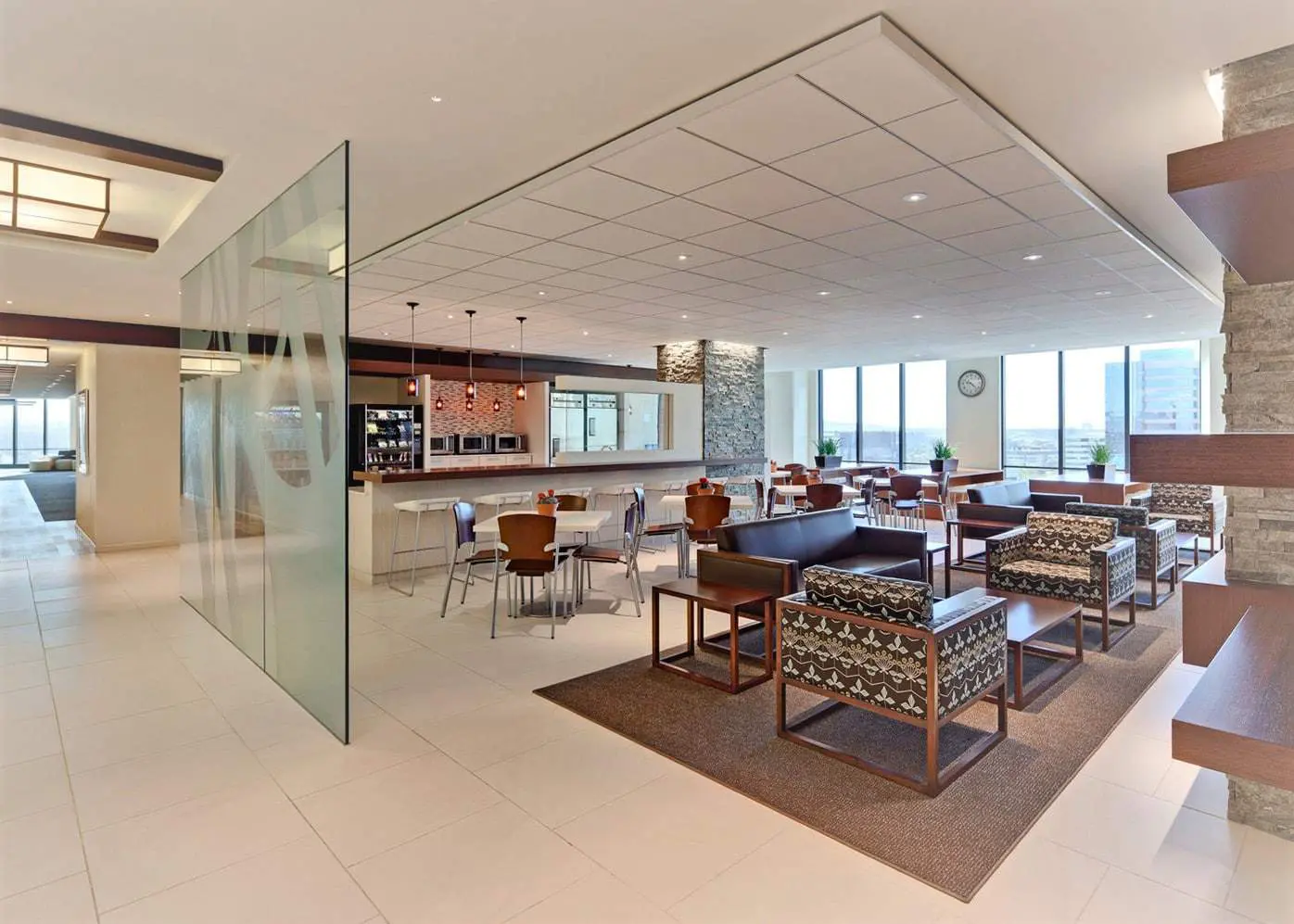
01 Oct How Your Workspace Affects Your Mental Health
People spend much of their waking time in their workplaces (approximately 33% on a weekly basis), which raises the possibility that the conditions they experience at work influence their health and well-being. “If one’s working conditions affect one adversely, the unwanted consequences, such as the reduced capacity to work, increased error rates and absences from work, influence both the employee and the employer.
Conversely, a well-designed workplace can be supportive, removing potential stressors and freeing individuals to focus on productive work.”
Recently, The National Business Furniture Happiness in the Workspace Study pinpointed four primary factors that can derail workplace satisfaction:
- Cluttered work area: 62% of respondents say having a cluttered work area would make them unhappy; this is especially true among employed women (70%) compared to men (55%).
- Outdated technology: Having to use outdated technology is a close second (61%) in driving workplace discontent.
- Poor workplace ergonomics: 54% say an uncomfortable workplace or chair would cause them consistent displeasure.
- Lack of privacy and flexibility: 43% said not having a private space would affect their mental wellness; 25% said they value flexible areas to work away from their usual workplaces.
Millennials Impacted Most by Physical Workspace
The research shows millennials are more likely than boomers to say the design of their personal workplace affects their ability to be productive and happy. This latest study mentions ways to keep younger employees content:
- Access to privacy amid open floor plans: Although nearly one in five working millennials (18 percent) attribute open floor plans to their happiness at work, they still desire some privacy in the workplace; 40 percent of millennials, compared to 30 percent of boomers, say having privacy screens or walls around their workplace is essential.
- Flexibility: For millennials (30 percent) more than boomers (21 percent), having breakout areas to work at drives their happiness at work. Working millennials also want various types of desks—stand-up and/or treadmill—and adjustable computer stands.
- Connectivity: Millennials (27 percent) say they really want whiteboards, corkboards or glass boards for shared use in the office, compared to far fewer working boomers (11 percent) who say the same.
What Can Business Managers Do to Keep Employees Happy at Work?
Harvard Business Review states, “Workspaces where employees are engaged to communicate to the people who work there — and anyone else in them — that their employer values them and the contribution that they make. The psychological lift that comes from feeling respected enhances engagement.
Creating the best office design more than just layout, it is about creating a healthy company culture that supports employees’ mental health.
Listen
Look at the research and listen to your own employees about what they want from their leadership and their home away from home; their office. Get a third party to survey your employees to get the most accurate information.
If you read The National Business Furniture Happiness in the Workspace Study you will want to offer employees better storage to keep away clutter, Keep technology up-to-date, provide ergonomic office furniture and provide privacy options that match your company culture.
Don’t follow the trend
Most workers need to be able to concentrate on the tasks at hand, and that’s difficult in a field of cubicles or in a sea of faces when the cubicles are removed and all employees are asked to sit at long tables. And those open spaces aren’t spurring useful communication. Research consistently shows that constructive, work-related collaboration doesn’t increase when work environments are made more open.
Create Spaces to Recharge
Performance pressures, noise, distractions, and fast-paced deadlines can be stressful for workers. Creating tranquil places to concentrate, especially in open-office environments, allow staff to choose their engagement level without losing the benefits of collaborative opportunities.
Positioning workstations away from busy aisles and work areas reduces distraction and noise, which glass panels also can help reduce. Respite rooms are gaining popularity, especially with customer service workers who need a quiet place to recharge from noisy phone work.
Stay Connected
Environments, where employees are physically seen and connected to coworkers, allow people to feel like they are part of an organization and not isolated. Good workplace design causes employees to “bump into each other” frequently – at the printer, the copier, the coffee maker. These are important opportunities for social engagement.
For good behavioral health, design elements can promote a culture of transparency and increase communication: lower workstation walls, glass windows to offices, and a view to leadership.
Perks
Regular exercise and providing access to daylight has not only shown to help reduce depression but also improves absenteeism, increases productivity and is high on the list of employee satisfaction. Design your workplace to maximize daylight for all workers. Provide a fitness area, outdoor walking paths or discounted gym membership. Strategies that help employees balance work and personal demands sometimes have the greatest return as time is often the most precious gift.
Flexible work schedules can help achieve such balance, as well as offering amenities like dry cleaning pick-up, access to food trucks, and even employee-of-the-month parking spot – all low or no cost strategies.
Source
https://www.longwoods.com/content/22409
https://hbr.org/2014/10/rules-for-designing-an-engaging-workplace
ABOUT THE STUDY
The National Business Furniture Happiness in the Workspace Study was conducted among 560 Americans ages 18+ who are employed full or part-time using an email invitation and an online survey conducted by Kelton Global. In this particular survey, the margin of error was +/- 4.1 percent. Quotas were set to ensure reliable and accurate representation of the U.S. population. To download the full study, go to National Business Furniture.
ABOUT KELTON GLOBAL
Kelton Global is a leading global insights firm serving as a partner to more than 100 of the Fortune 500 companies. Kelton Global partners with thousands of smaller companies and organizations as well. For more information about Kelton Global, visit http://www.keltonglobal.com.



















